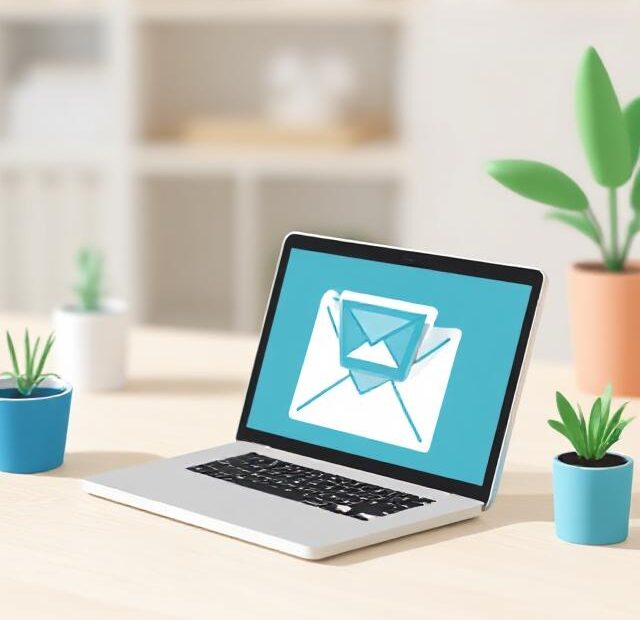Email marketing remains one of the most powerful tools for building customer relationships and driving conversions. But sending random emails won’t deliver results. To turn prospects into paying customers, you need a clear strategy. That’s where knowing how to nurture leads via email sequences comes in.
Email sequences are pre-planned series of emails sent automatically over time. They educate, build trust, and guide leads through the sales funnel. Done correctly, they create a smooth journey from the first interaction to the final purchase. In this guide, we’ll explore the best practices for creating effective sequences that convert.
Why Lead Nurturing Matters
Not every lead is ready to buy right away. Some need more information, reassurance, or time before making a decision. Without nurturing, many of these leads will lose interest or choose a competitor.
Email sequences solve this problem by:
-
Delivering consistent value
-
Keeping your brand top of mind
-
Addressing objections before they arise
-
Moving leads step by step toward conversion
Understanding how to nurture leads via email sequences allows you to maximize the potential of every contact in your database.
Types of Email Sequences
Different sequences serve different purposes. Here are the most common types to include in your strategy:
1. Welcome Sequence
Sent right after a lead joins your list. These emails:
-
Introduce your brand story
-
Set expectations for future communication
-
Share your most helpful resources
2. Educational Sequence
Focuses on providing knowledge, tips, or insights. It positions you as an authority and builds trust. Examples include tutorials, guides, or industry insights.
3. Promotional Sequence
Used to promote products, special offers, or events. These emails highlight benefits, discounts, and urgency to encourage conversions.
4. Re-engagement Sequence
Designed for inactive subscribers. It reminds them of your value and entices them back with fresh content or exclusive offers.
5. Onboarding Sequence
Perfect for SaaS or service-based businesses. It helps new customers understand your product, ensuring they achieve success quickly.
By blending these sequences strategically, you can create a comprehensive nurturing system.
Key Elements of Effective Email Sequences
Now let’s dive into what makes sequences truly effective.
1. Understand Your Audience
The foundation of nurturing is knowing your leads. Segment your list based on demographics, interests, or behavior. Personalized content resonates better than generic messages.
2. Provide Value First
Every email should deliver something useful—whether it’s a tip, a case study, or a resource. Value-driven content builds trust and keeps readers engaged.
3. Craft Compelling Subject Lines
If the subject line doesn’t grab attention, the email won’t be opened. Keep it short, relevant, and curiosity-driven.
4. Align with the Buyer’s Journey
Map emails to different stages:
-
Awareness: Educate and inspire
-
Consideration: Offer comparisons, case studies, and solutions
-
Decision: Highlight testimonials, pricing, and limited-time offers
5. Clear Call-to-Action (CTA)
Every email should guide readers to a next step, whether it’s downloading a guide, booking a call, or making a purchase.
Timing and Frequency
Sending too many emails too quickly risks overwhelming leads. Sending too few means they may forget about you. A good balance is key.
-
For a welcome sequence, send 3–5 emails over the first week.
-
For educational content, once or twice a week is ideal.
-
For promotions, limit to avoid appearing pushy—focus on relevance and urgency.
Automation tools like Mailchimp, ActiveCampaign, or HubSpot can schedule sequences perfectly based on behavior triggers.
Personalization and Segmentation
Generic emails rarely convert. Instead, use data to personalize:
-
Insert the recipient’s name in subject lines or greetings.
-
Recommend products based on past behavior.
-
Segment lists by industry, interests, or engagement level.
Personalization shows leads you understand their needs, strengthening trust and increasing conversion chances.
Common Mistakes to Avoid
Even with automation, mistakes can hurt results. Avoid these pitfalls:
-
Overloading emails with text – Keep it short and scannable.
-
Ignoring mobile optimization – Most people check email on their phones.
-
Forgetting to test – Always A/B test subject lines, CTAs, and content.
-
One-size-fits-all approach – Tailor messages for different lead types.
Avoiding these errors ensures your nurturing efforts are effective and professional.
Tracking and Measuring Success
To know if your sequences work, monitor key metrics:
-
Open rates: Are subject lines engaging?
-
Click-through rates (CTR): Are readers taking action?
-
Conversion rates: Are emails driving sales or sign-ups?
-
Unsubscribe rates: Are you overwhelming or under-delivering?
Use these insights to optimize and refine your sequences over time.
Final Thoughts
Mastering how to nurture leads via email sequences is essential for businesses that want consistent conversions. With the right strategy, you can guide leads naturally through the buyer’s journey, turning interest into trust and trust into sales.
By providing value, personalizing content, and optimizing over time, your email sequences become a powerful engine for growth. Instead of chasing cold prospects, you’ll build relationships that result in loyal customers and long-term revenue.
Also, you can learn more about Cold Email Outreach here.
